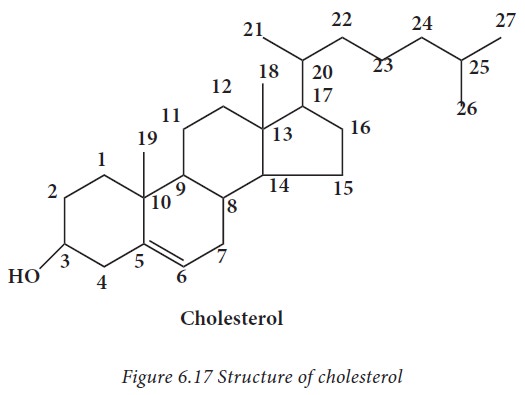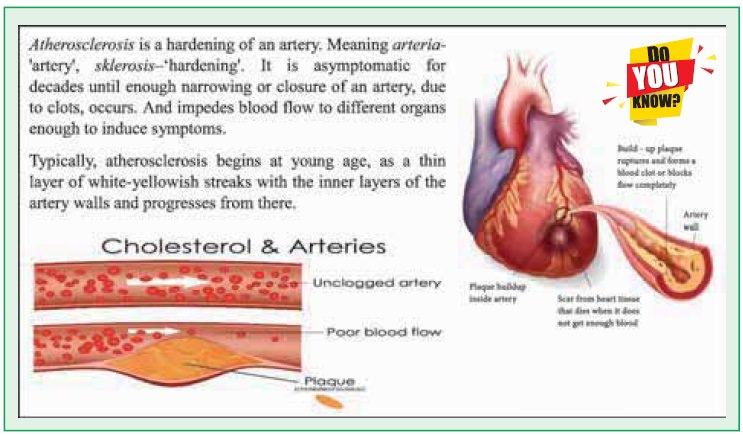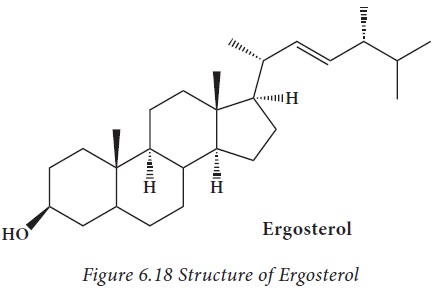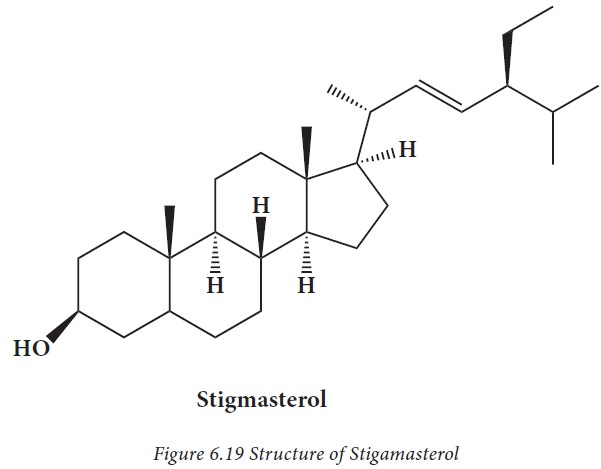Example, Structure, Types, Importance, Applications | Lipids - Derived Lipids | 11th Biochemistry : Chapter 6 : Lipids
Chapter: 11th Biochemistry : Chapter 6 : Lipids
Derived Lipids
Derived Lipids:
1. Steroids:
Steroids
are derived lipids. They may be recognized by their cyclo pentane perhydro
phenatherene ring-tetracyclic skeleton. It consists of three six-membered ring
(A,B,C) and one five-membered ring(D), as shown in the diagram.

2. Sterols
Sterols,
also known as steroid alcohols, are a subgroup of steroids with a hydroxyl
group at the 3-position of the A-ring. They are amphipathic lipids as the
hydroxyl group on the A ring is polar and the rest of the aliphatic chain is
non-polar.
Types:
• Phytosterols (Example: Stigmasterol)
• Zoosterols (Example: Cholesterol)
Sterols of plants are called
phytosterols and sterols of animals are called zoosterols. The most important
zoosterol is cholesterol; phytosterols include campesterol, sitosterol and stigmasterol. Ergosterol is a sterol
present in the cell membrane of fungi, where it serves a role similar to
cholesterol in animal cells.
i. Cholesterol
Cholesterol
is widely distributed in all cells and is a major component of cell membrane
and lipoproteins.
ii. Structure
Cholesterol
is a C27 compound with molecular formula C27H46O.
With a hydroxyl group at C3 and a double bond between C5
and C6. An aliphatic side chain is attached at C17 and 5
methyl groups.

Properties of Cholestero
·
Cholesterol exists as crystals that are white, shiny and rhombic in
nature.
·
It is tasteless and odourless
·
It has a high melting point of 150ºC
·
It is insoluble in water and soluble in fat solvents
·
It is a poor conductor of heat and electricity and serves as an
insulator. In brain, where it is present abundantly acts as an insulator
against nerve impulse which are electric in nature.
·
Cholesterol when
oxidized under suitable conditions, undergoes rapid oxidation to form a ketone
called cholestenone.
·
The hydroxyl group
of cholesterol readily forms ester with fatty acids like stearic acid.

Importance of Cholesterol:
Cholesterol is vital to cell membrane structure,
and functions as a precursor to fat-soluble vitamins and steroid hormones
·
It is also a key
regulator of membrane fluidity in animals.
·
It forms lipid
rafts when it complexes with certain phospholipids, which makes the membranes
less fluid and less subject to phase transitions. This also increases the
permeability of the cell membrane to hydrogen and sodium ions.
·
It also assists the
liver in the manufacture of bile acids, which is essential for digestion and
absorption of fat-soluble vitamins such as vitamin A, D, E and K.
·
It helps in
maintenance of our body temperature and protects our internal organs.
·
In pharmaceutical
industries, cholesterol is used in the manufacture of steroid hormones and
vitamin D.
ii. Ergosterol
Ergosterol
is a sterol found in cell membranes of fungi and protozoa, serving many of the
same functions that cholesterol serves in animal cells. Ergosterol is a
pro-vitamin form of vitamin D2; exposure to ultraviolet (UV) light
causes a chemical reaction that produces vitamin D2.

iii. Biological function:
Ergosterol
is a biological precursor of vitamin D2 (ergocalciferol). In mushroom
cultivation, after harvest, mushrooms are irradiated to increase their Vitamin
D content.
Fungi
are also grown industrially for extraction of ergosterol and synthesis of
Vitamin D.
iv. Stigmasterol
Stigmasterol
also known as Wulzen anti-stiffness factor, is a plant sterol. Stigmasterol is
an unsaturated phytosterol occurring in a number of medicinal herbs.
Stigmasterol is also found in various vegetables, legumes, nuts, seeds, and
unpasteurized milk.

Applications:
· Stigmasterol is used as a precursor in the
manufacture of semisynthetic progesterone, a valuable human hormone that plays
an important physiological role in the regulatory and tissue rebuilding
mechanisms.
· Acts as an intermediate in the biosynthesis of androgens,
estrogens, and corticoids.
Related Topics